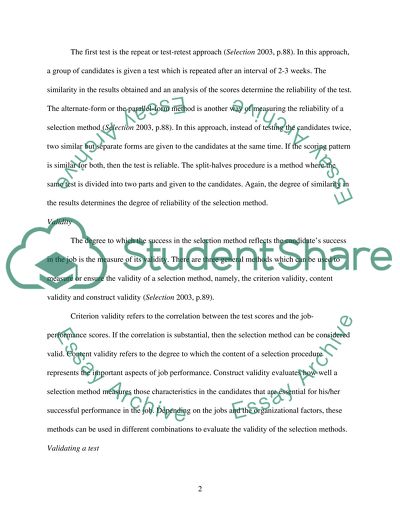Cite this document
(Validity and Reliability in Selection Process Coursework, n.d.)
Validity and Reliability in Selection Process Coursework. Retrieved from https://studentshare.org/human-resources/1549553-occupational-psychologists-stress-the-need-for-validity-and-reliability-throughout-the-selection-process-explain-how-this-can-be-achieved-and-critically-examine-the-practical-case-for-and-against-such-rigour-in-selectionin-practicein-an-english-contex
Validity and Reliability in Selection Process Coursework. Retrieved from https://studentshare.org/human-resources/1549553-occupational-psychologists-stress-the-need-for-validity-and-reliability-throughout-the-selection-process-explain-how-this-can-be-achieved-and-critically-examine-the-practical-case-for-and-against-such-rigour-in-selectionin-practicein-an-english-contex
(Validity and Reliability in Selection Process Coursework)
Validity and Reliability in Selection Process Coursework. https://studentshare.org/human-resources/1549553-occupational-psychologists-stress-the-need-for-validity-and-reliability-throughout-the-selection-process-explain-how-this-can-be-achieved-and-critically-examine-the-practical-case-for-and-against-such-rigour-in-selectionin-practicein-an-english-contex.
Validity and Reliability in Selection Process Coursework. https://studentshare.org/human-resources/1549553-occupational-psychologists-stress-the-need-for-validity-and-reliability-throughout-the-selection-process-explain-how-this-can-be-achieved-and-critically-examine-the-practical-case-for-and-against-such-rigour-in-selectionin-practicein-an-english-contex.
“Validity and Reliability in Selection Process Coursework”. https://studentshare.org/human-resources/1549553-occupational-psychologists-stress-the-need-for-validity-and-reliability-throughout-the-selection-process-explain-how-this-can-be-achieved-and-critically-examine-the-practical-case-for-and-against-such-rigour-in-selectionin-practicein-an-english-contex.


